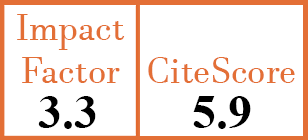Full Papers
Utilisation of primary healthcare services by Sjögren’s syndrome patients in the Community of Madrid and associated factors: a population-based cross-sectional study
J. Barrio-Cortes1, T. Gómez-Gascón2, B. Benito-Sánchez3, M.F. Domínguez-Berjón4, M.D. Esteban-Vasallo5, J.P. Chalco-Orrego6, E.F. Vicente-Rabaneda7, C. Baldini8, C. Seghieri9, A.V. Goules10, D.I. Fotiadis11, A.G. Tzioufas12
- Foundation for Biosanitary Research and Innovation in Primary Care, Madrid; Primary Care Research Unit, Gerencia de Atención Primaria, Madrid; Faculty of Health, Universidad Camilo José Cela, Madrid; and Gregorio Marañón Health Research Institute, Madrid, Spain.
- Foundation for Biosanitary Research and Innovation in Primary Care, Madrid; Gerencia de Atención Primaria; Instituto de Investigación Sanitaria Hospital 12 de Octubre (imas12), Gerencia de Atención Primaria, Madrid; and Faculty of Medicine, Universidad Complutense de Madrid, Spain.
- Foundation for Biosanitary Research and Innovation in Primary Care, Madrid, Spain. beatrizbenitosanch@salud.madrid.org
- Technical Unit for Health Status Report and Registries, Subdirección General de Vigilancia en Salud Pública, Dirección General de Salud Pública, Madrid, Spain.
- Technical Unit for Health Status Report and Registries, Subdirección General de Vigilancia en Salud Pública, Dirección General de Salud Pública, Madrid, Spain.
- Technical Unit for Health Status Report and Registries, Subdirección General de Vigilancia en Salud Pública, Dirección General de Salud Pública, Madrid, Spain.
- Rheumatology Department, Hospital Universitario de La Princesa, Madrid; and IIS-Princesa, Madrid, Spain.
- Rheumatology Unit, Department of Clinical and Experimental Medicine, University of Pisa, Italy.
- Istituto di Management, EMbeDS, Scuola Superiore Sant'Anna, Pisa, Italy.
- Department of Pathophysiology, School of Medicine, National and Kapodistrian University of Athens, Greece.
- Unit of Medical Technology and Intelligent Information Systems, Department of Materials Science and Engineering, University of Ioannina, Greece.
- Department of Pathophysiology, School of Medicine, National and Kapodistrian University of Athens; and Centre of Experimental Surgery and Translational Research, Section of Stratified Medicine and Biomarker Discovery for Autoimmune Diseases, Biomedical Research Foundation Academy of Athens (BRFAA), Athens, Greece.
CER16932
2023 Vol.41, N°12
PI 2397, PF 2408
Full Papers
Free to view
(click on article PDF icon to read the article)
PMID: 37534685 [PubMed]
Received: 21/06/2023
Accepted : 17/07/2023
In Press: 03/08/2023
Published: 23/12/2023
Abstract
OBJECTIVES:
To describe the utilisation of primary health care (PHC) services and factors associated with its use by patients diagnosed with Sjögren’s syndrome (SS).
METHODS:
Population-based cross-sectional cohort of SS patients in Madrid, Spain (SIERMA). Sociodemographic, diagnostic, clinical and PHC service utilisation variables were studied by bivariate analyses and regression models.
RESULTS:
A total of 4,778 SS patients were included, 65.2% classified as primary SS (pSS), while 34.8% associated with another autoimmune disease (associated SS). Mean age was 64.3 years, and 92.8% of the patients were women. A total of 87.5% used PHC services, with a mean of 19.8 consultations/year. The general practitioner was the most visited health professional, with a mean of 10.9 consultations/year, followed by the nurse, with a mean of 5.7. Characteristics associated with a greater use of PHC services in SS patients were associated SS, higher adjusted morbidity groups (AMG) risk level and older age. Additional factors included symptoms such as dry mouth, fatigue, dry vagina and joint and muscle pain; comorbidities such as atrial fibrillation, diabetes, hypertension, solid malignant neoplasms, coronary heart disease and chronic obstructive pulmonary disease; and treatments such as sterile saline solution, corticosteroids, opioids and biologic disease-modifying anti-rheumatic drugs.
CONCLUSIONS:
Most SS patients used PHC services during the study period, and the mean number of consultations was remarkably high. Utilisation was mainly associated with AMG risk level, ageing, glandular and extra-glandular symptoms, substantial comorbidities and various treatments. An optimised design of PHC policies will facilitate early diagnosis, improved management and better quality of life for SS patients.



